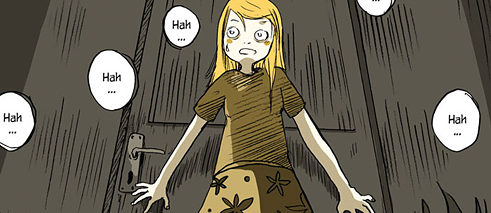Science Fiction in Germany
The Future Becomes the Present

Germany has a longstanding tradition of science fiction. Devoting themselves to this genre, a whole host of contemporary artists demonstrate that science fiction is about a lot more than simply spaceships and lightsabers.
The British writer James Graham Ballard, who died in 2009, once remarked that the future is a better key to the present than the past. This is actually rather an odd statement to make, given that it is past events that explain the present, not that which has yet to happen. Nevertheless, the way a society thinks about things that have not yet happened and what it sees when it looks into the future can tell us something fundamental about this society.
It therefore made complete sense for the 2015 Venice Art Biennale to be entitled All the World’s Futures and for it to ask how visions of the future can be made visible through the language of art. One art form that already speaks in future visions is science fiction.
However, anyone who takes science fiction merely to mean Hollywood blockbusters of the Star Wars variety has failed to realize that this genre has evolved in different ways around the world. Germany for example has its own science fiction tradition which was shaped in the early twentieth century by authors such as Kurd Lasswitz (Two Planets) and Alfred Döblin (Berge Meere und Giganten / Mountains Seas and Giants). As a result of the cultural disruption brought about by twelve years of National Socialist rule, however, it was above all American science fiction that was popular after the Second World War, which the Germans sought to emulate with Perry Rhodan, a series set in space that was launched in 1961. Perry Rhodan magazines are still published to this day, yet German science fiction has long been more than just Perry Rhodan: Friedrich Dürrenmatt, Carl Amery, Günther Grass and other prominent authors have played with science fiction elements, just as many contemporary artists still do today.
Fighting for a good society
As far as science fiction content is concerned, the work of many German-speaking artists in recent years has been characterized by two main trends: the collapse of society after some kind of disaster; and the search for an alternative and better form of human coexistence. In Die Verteidigung des Paradieses (i.e. The Defence of Paradise), a novel by Thomas von Steinaecker which was published in March 2016, six people are living in a refuge high in the Alps, as the rest of the country has been destroyed. Apparently, however, there is still civilization somewhere – and a grim journey begins. Karen Duve’s book Macht (i.e. Power), which appeared in February 2016, is apocalyptic in a different way: set in the year 2031, Germany this time is a country afflicted by climate change where democracy has taken on bizarre excesses. And conditions in Reinhard Jirgl’s 2012 novel Nichts von euch auf Erden (i.e. Nothing of You on Earth) are so calamitous that people are forced to move to the Moon and Mars in order to survive.Yet there, on other planets, people may in fact develop a better (or let us say more sensible) model for society. Leif Randt and Dietmar Dath for example both tell of such worlds in their respective novels Planet Magnon and Venus siegt (i.e. Venus Wins), yet there is no such thing as a perfect world for them either: a good society always has to be fought for and defended.
This combination of dystopia and utopia can also be found in other media. In Hell, a 2011 film directed by Tim Fehlbaum, solar radiation has become so intense in Europe that it is almost impossible to spend any time outside. The only form of community that remains takes place in extremely small groups. And in the 2010 film Die kommenden Tage (The Coming Days) directed by Lars Kraume, the only option left to the protagonists is to flee from a Germany devastated by rioting – a spectacular reversal of the current refugee movements. Comics such as Endzeit (i.e. End Time) by Olivia Vieweg and Mensch wie Gras wie (i.e. Mortals Like Grass Like) by Dietmar Dath and Oliver Scheibler also embark on a search for islands of hope in a world that has spiralled out of control.
The vision of a common future
There are two sides to the future envisaged by German artists: while financial crises, environmental destruction and terrorism prompt them to paint gloomy scenarios, attempts are made at the same time to find a way out – and to create a non-exploitative and sustainable society that shows solidarity. And to find such a way out it is not even necessary to tell stories: architectural projects such as Saskia Hebert’s “Stadt (Er)finden” (a play on words roughly meaning “discovering/inventing the city”) and Arno Brandlhuber’s “Anti-Villa” illustrate possible prospects, as do the artists Julia Lohmann, whose design objects lay bare their production methods, and Olaf Nicolai, who creates oversized versions of consumer articles.Incidentally, Olaf Nicolai was also involved in the German pavilion at the 2015 Biennale, where different blueprints for future developments from all over the world were on show, and where one might have a sense for a brief moment that humans – despite all that has divided them in the past – could after all have a common future.